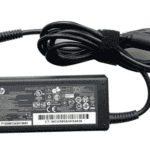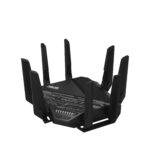DDR5 memory is transforming data centers. It is the newest type of computer memory and offers faster speeds and better efficiency than older memory types. The rapid evolution of technology and the exponential growth of data are placing unprecedented demands on data centers worldwide. DDR5 memory is a critical solution, enhancing data center capabilities with improved performance, increased capacity, enhanced power efficiency, and better error correction.
This new memory enables data centers to handle more data at once, allowing servers to work more efficiently and consume less power. Switching to DDR5 will bring significant improvements to data centers, enabling faster data processing and benefiting tasks like cloud computing and big data analysis. This transition to DDR5 marks a crucial step for modern data centers.

DDR5: The New Era of Data Center Memory
Enhanced Performance and Bandwidth
DDR5 brings a significant leap in performance compared to its predecessor, DDR4. With doubled bandwidth and faster data transfer rates, DDR5 enables data centers to process vast amounts of information quickly and efficiently. This boost in performance is crucial for handling demanding workloads, such as artificial intelligence, machine learning, and big data analytics.
Increased Capacity and Density
Data centers are constantly dealing with growing data demands. DDR5 addresses this challenge by offering higher capacity modules, allowing for more memory to be packed into the same physical space. This increased density not only improves performance but also reduces the overall footprint of servers, making data centers more space-efficient.
Improved Power Efficiency
In the world of data centers, power consumption is a major concern. DDR5 incorporates several advancements that enhance power efficiency, such as lower operating voltages and on-module voltage regulation. These features help reduce energy consumption and heat generation, leading to lower operating costs and a smaller carbon footprint for data centers.
Enhanced Error Correction
Data integrity is paramount in data centers, and DDR5 takes error correction to the next level. It includes improved error correction code (ECC) mechanisms that can detect and correct errors more effectively than DDR4. This ensures the reliability and accuracy of data stored and processed in the data center, minimizing the risk of data corruption or loss.
Future-Proofing Data Centers
DDR5 is not just an incremental upgrade; it’s a technology that paves the way for the future of data centers. As data-intensive applications continue to evolve, DDR5 provides the necessary foundation for meeting the growing demands for speed, capacity, and efficiency. Investing in DDR5 now ensures that data centers are well-prepared for the challenges and opportunities that lie ahead.
| Feature | DDR4 | DDR5 |
|---|---|---|
| Bandwidth | Up to 3.2 Gbps | Up to 6.4 Gbps |
| Data Rate | Up to 3200 MT/s | Up to 6400 MT/s |
| Capacity (per module) | Up to 32 GB | Up to 128 GB |
| Power Consumption | 1.2V | 1.1V |
Key Takeaways
- DDR5 memory boosts data center speed and efficiency
- It handles more data while using less power
- Upgrading to DDR5 helps data centers meet growing demands
Advancements in DDR5 Memory
DDR5 memory brings major upgrades to data centers. It offers faster speeds, better power efficiency, and higher capacity than older memory types.
Enhanced Performance and Speeds
DDR5 memory modules run much faster than DDR4. They can reach data rates of 8.4 gigatransfers per second or higher. This is over 2.5 times faster than DDR4’s top speed.
The increased speed helps CPUs work more quickly. It lets them process more data at once. This is key for data centers that handle huge amounts of information.
DDR5 also has lower latency. This means there’s less delay when accessing data. The improved speed and latency lead to big gains in overall system performance.
Improved Power Efficiency and Capacity
DDR5 uses power more wisely than older memory types. It needs less voltage to run. This cuts down on energy use in data centers.
The new design allows for larger memory capacity too. DDR5 modules can hold more data than DDR4 ones of the same size. This lets servers handle bigger workloads without taking up extra space.
DDR5’s power management happens on the memory module itself. This takes stress off the motherboard and improves efficiency even more.
DDR5 Architecture and Compatibility
DDR5 has a new internal structure. It uses two separate 32-bit channels per module instead of one 64-bit channel. This setup boosts bandwidth and makes data flow smoother.
The memory works with new CPUs like Intel’s Raptor Lake and AMD’s Zen 4. Many new motherboards support DDR5. Some even allow for memory overclocking with Intel XMP 3.0 or AMD EXPO.
DDR5 is becoming the new standard for high-end systems. But it’s not fully compatible with older hardware. Data centers will need to upgrade other parts when switching to DDR5.
Impact on Data Center Performance
DDR5 brings major upgrades to data center operations. It boosts speed and capacity while lowering power use. These changes lead to better performance across server systems.
Meeting the Demands of Modern Computing
DDR5 RAM helps data centers keep up with growing needs. It offers much faster data speeds than DDR4. This means servers can process more information at once. DDR5 also has higher memory density. A single server can now hold more RAM in the same space.
This extra speed and capacity is key for AI and big data tasks. These workloads need to crunch huge amounts of data quickly. DDR5 allows data centers to run more complex programs. It also helps them handle larger datasets.
DDR5 uses power more wisely too. It can do more work with less energy. This lets data centers expand their computing power without huge increases in electricity costs.
Enhancing Reliability and Productivity in Data Centers
DDR5 makes data centers more dependable. It has better error checking than older memory types. This catches and fixes small issues before they cause problems. The result is less downtime and fewer crashes.
The improved reliability leads to higher productivity. Servers spend less time offline for fixes. They can run longer without breaks. This means more uptime for critical systems and services.
DDR5 also adds new features that boost efficiency. It can change its settings on the fly to match workloads. This helps servers adapt to different tasks throughout the day. The end result is smoother operations and better use of resources.
Frequently Asked Questions
DDR5 RAM brings major upgrades for data centers. It offers faster speeds, better efficiency, and higher capacity than DDR4. Let’s explore some common questions about DDR5 in server environments.
What are the performance advantages of DDR5 RAM over DDR4 in server environments?
DDR5 RAM is much faster than DDR4. It can transfer data at speeds up to 6400 MT/s. DDR4 tops out around 3200 MT/s. This boost in speed helps servers process data more quickly.
DDR5 also has wider memory channels. This allows more data to flow at once. The result is smoother performance for data-heavy tasks.
How does DDR5 RAM impact energy efficiency in data center operations?
DDR5 uses less power than DDR4 while delivering better performance. It runs at a lower voltage of 1.1V compared to 1.2V for DDR4. This small drop adds up to big energy savings in large data centers.
DDR5 also has better power management features. It can adjust voltage on the fly to save energy when servers are less busy.
What considerations should be made when transitioning from DDR4 to DDR5 in data infrastructure?
Switching to DDR5 requires new hardware. Servers need motherboards and CPUs that support DDR5. This means a big upfront cost for data centers.
IT teams must plan the upgrade carefully. They should test DDR5 systems to catch any issues. Training staff on the new hardware is also key.
How does increased memory bandwidth with DDR5 contribute to data center processing capabilities?
DDR5’s higher bandwidth lets servers handle more data at once. This speeds up database queries, data analysis, and AI workloads. Servers can tackle bigger datasets without slowing down.
The extra bandwidth also helps with virtualization. Data centers can run more virtual machines on each server.
What are the implications of DDR5 memory speeds for AI and machine learning workloads in data centers?
DDR5’s speed boost is great for AI and machine learning. These tasks need to process huge amounts of data quickly. Faster memory means AI models can train faster and handle larger datasets.
DDR5 also helps with real-time AI applications. Lower latency allows for quicker responses in tasks like natural language processing.
Can DDR5 RAM’s increased capacity support the scalability demands of modern data centers?
Yes, DDR5 supports much higher capacities than DDR4. Single DDR5 modules can hold up to 128 GB. This is double the max size of DDR4 modules.
The higher capacity lets data centers pack more memory into each server. This helps them handle growing data loads without adding more machines.







